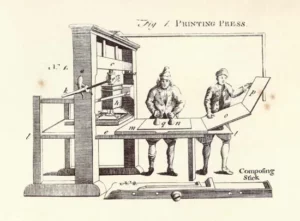
As language translation is an essential part of communication, it is essential to understand how it was found. In this blog, we will take a closer look at the history of language translation.
The Origin of Language Translation
The origin of language translation dates back to ancient times. It is believed that the ancient Egyptians had a system of translation to read and write in multiple languages. The discovery of the Rosetta Stone, inscribed with three different scripts, helped unlock the hieroglyphs of the ancient Egyptians. This discovery opened up new possibilities for scholars to translate several languages.
In ancient China, the use of translation was also widespread. The Chinese began translating texts in the third century BCE, with the help of a bilingual dictionary known as the “Erya.” This dictionary helped translators understand complex languages.
In medieval Europe, scholars relied on Arabic translators for their knowledge of mathematics, philosophy, and medicine. This exchange of knowledge helped build the foundations of modern science.
The Advent of Printing Press
The advent of the printing press in the fifteenth century helped make the translation process more accessible. The printing press revolutionized the way books were produced, distributed, and translated. It gave people access to more books and made translations more widely available.
The development of dictionaries and grammar books helped standardize language translation in the following centuries. An English dictionary by Samuel Johnson and a documentary edition of Shakespeare’s plays by Edward Malone were influential in the development of the English language.
The Use of Language Translation Today
The advent of the internet has made translation more accessible and more widely used. With the development of translation software and apps, it is now possible to translate texts and communicate with people from different languages instantly.
Today, many professional translators use computer-aided translation tools, which use machine translation to help speed up the translation process. These tools help retain the accuracy of translations while keeping up with the growing demand for translation work.
Who is the father of translation?
The father of translation is widely considered to be St. Jerome, who lived in the fourth century AD. St. Jerome is most known for his translation of the Bible from Hebrew and Greek into Latin. This translation is known as the Vulgate, and it became the standard Bible for the Catholic Church. St. Jerome’s translation of the Bible was not only a linguistic achievement, but it also helped spread Christianity throughout the world.
What is the purpose of translation?
The purpose of translation is to convey the meaning of a text from one language to another. Translation plays a vital role in global communication and dissemination of information, allowing people from different linguistic and cultural backgrounds to understand each other better. The world’s literature, science, technology, and even social media are available in different languages only through translations. The purpose of translation goes beyond words, as it also involves preserving cultural heritage and promoting multiculturalism.
Where is the start of translation?
There is no precise point of the start of translation, as it seems to be a universal phenomenon that has accompanied human history from ancient times. The first records of translation come from the ancient civilizations of Mesopotamia, Egypt, and Greece. The translation of religious texts helped expand the reach of religion, and translations of scientific and philosophical works spread important knowledge across continents. Over time, translation has evolved, and new technologies and methods have arisen to facilitate the process of translation while maintaining its cultural significance.
Final Thoughts
Language translation is an essential part of communication, and it has come a long way since ancient times. The methods and tools used in translating languages may have evolved, but the purpose remains the same, to break down barriers and connect people from different cultures.
We hope you enjoyed the blog post of Languages Unlimited about How was language translation found. With the use of modern technology, language translation has become even more accessible, making communication easier and more effective. As the world becomes more connected, the importance of language translation is only set to grow.

